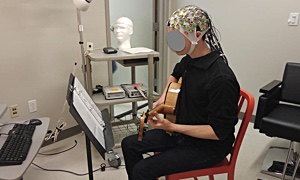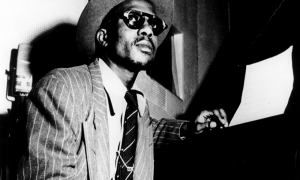Home » Jazz Articles » The Art and Science of Jazz » Access for People with Disabilities at Jazz Venues: Wha...
Access for People with Disabilities at Jazz Venues: What is really missing

The Americans with Disabilities Act (ADA) requires that at least 1% of seats be wheelchair seating and that this accessible area be an integral part of the floor plan. Also, the law mandates that wheelchair locations be available in all areas of the venue and that each location be next to a companion seat.1 Figure 2 illustrates this second point.2


Is your favorite jazz club truly accessible to people with disabilities? That is a rarely asked question and one that is seldom answered. It is safe to say that the general public does not fully understand what is required to make a venue disability-friendly. To understand more I contacted writer, jazz aficionado and disability advocate Mike Ervin. One of the most obvious things that Ervin pointed out was the bathroom situation. Sometimes even when a venue provides other accommodations for wheelchair-bound customers, it does not have restrooms that these patrons can easily use. The second point Ervin brought up was entrance and exit accessibility. ADA requires 50% of ports of egress and ingress be wheelchair friendly. The law also mandates that a renovated facility be accessible in the new areas. The budget for a building project must add the elements of accessibility as long as it is within an additional 20% of the total construction cost. When it comes to new constructions the law states that they must be 100% accessible without exception. Even when the rules are followed, that may not offer an entirely satisfactory solution.1 Ervin gave a personal example. A very accommodating local establishment has installed a wheelchair lift for patrons unable to navigate its flight of stairs. The owner graciously helps wheelchair bound attendees by operating the lift when they arrive. However, since he lives in Chicago where the weather is not always temperate, Ervin is exposed to the elements (including low temperatures in the winter) while he waits for the owner to arrive and operate the lift.
Another important issue Ervin raised is access for performers with limited mobility. Even at venues where the audience areas are accessible to people with disabilities, the stage may not be so.
It is rare to find a jazz club that meets all these ADA requirements. Why is that? I posed the question to Ervin. He pointed out several factors. For example, the buildings that house them may predate the ADA and may be too old to sustain significant remodeling. ADA became law in 1990 and many older constructions did not meet its criteria. ADA does not exempt these structures. In fact, it makes clear modification recommendations. Yet this remains one of the most misunderstood section of the law. 3
Another reason Ervin mentioned was builders and owners think of ADA as a hindrance and find ways to get around it. Sometimes inspectors also turn a blind eye to these violations. Fixed seating at historic venues makes it hard for modification to be done in a cost-effective manner. Finally, there is also an element of lack of sensibility about the importance of making spaces accessible to people with disabilities
ADA has been the law of the land for 28 years. Following it is not merely an issue of being customer friendly. It is also a matter of civil rights. It is time for all music venues to implement its recommendations so everyone, regardless of mobility, can derive the same amount of enjoyment and satisfaction from live performances.
References
12
3
< Previous
Ultimate Duets
Next >
Symbol Systems
Comments
Tags
For the Love of Jazz
 All About Jazz has been a pillar of jazz since 1995, championing it as an art form and, more importantly, supporting the musicians who create it. Our enduring commitment has made "AAJ" one of the most culturally important websites of its kind, read by hundreds of thousands of fans, musicians and industry figures every month.
All About Jazz has been a pillar of jazz since 1995, championing it as an art form and, more importantly, supporting the musicians who create it. Our enduring commitment has made "AAJ" one of the most culturally important websites of its kind, read by hundreds of thousands of fans, musicians and industry figures every month.




















